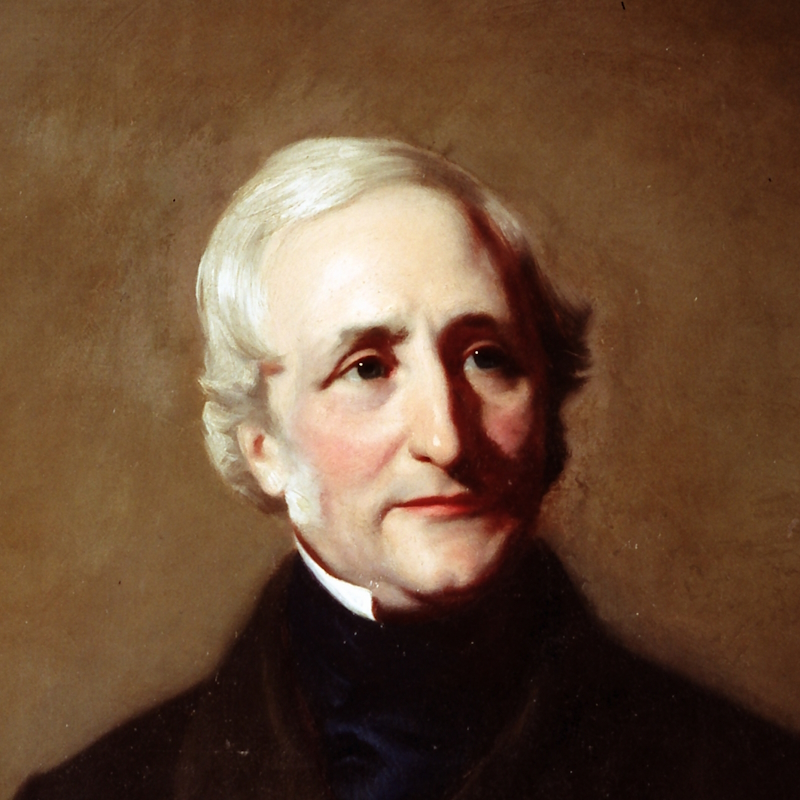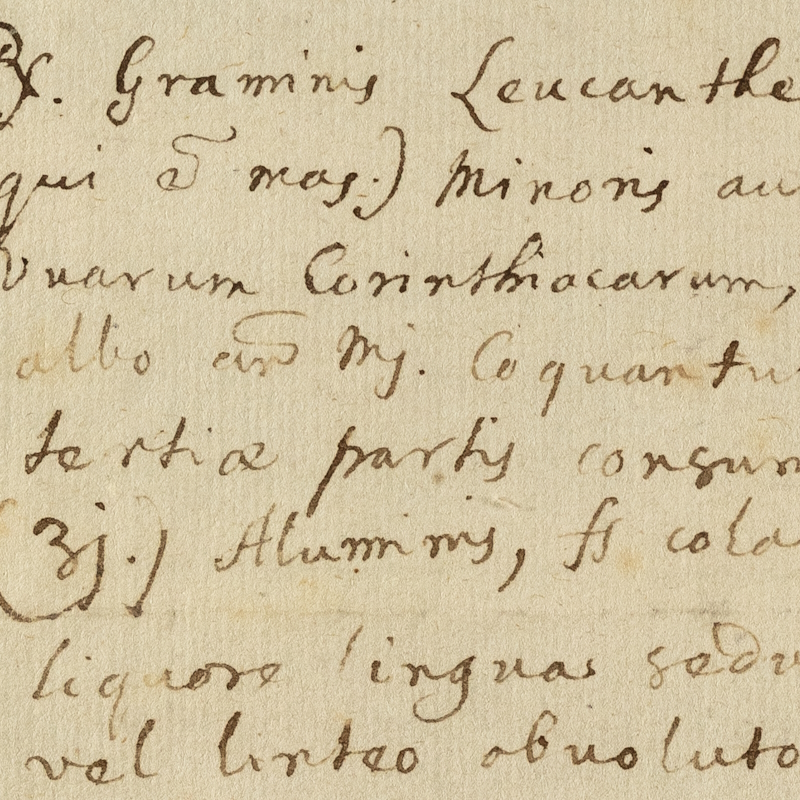Archive Cataloguer Layla Hillsden takes a look through a collection of (mostly) unpublished manuscripts in the collections of the Royal Society.
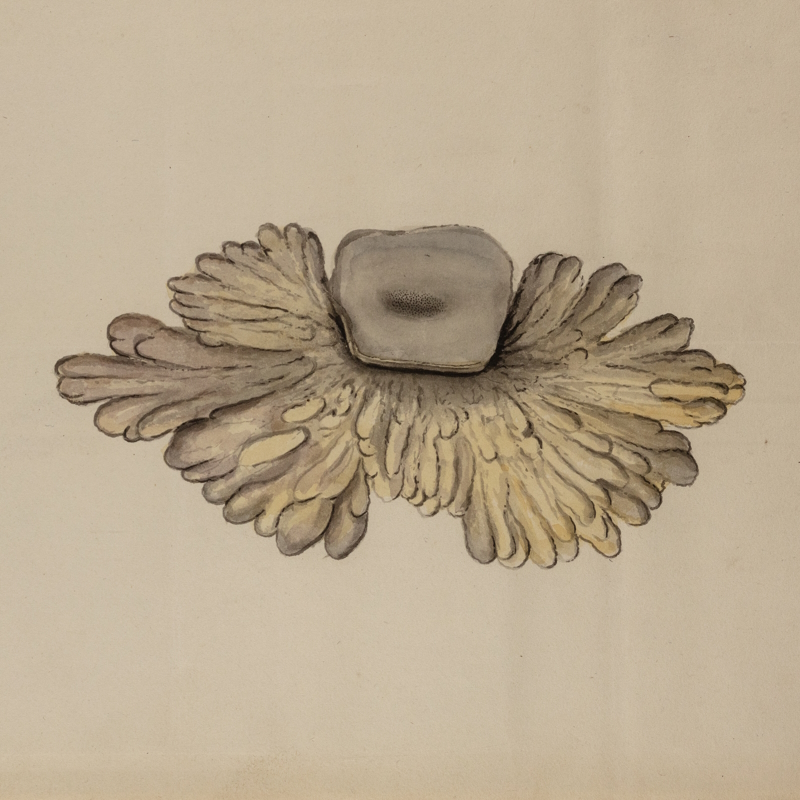
In my time as a cataloguer at the Royal Society Library, I’ve mainly worked on the Archived Papers collection, adding to the collection of records on our new Science in the Making platform.
I must confess I’ve grown fond of the rejected and overlooked papers in this collection, which represents over 200 years of mostly unpublished science. There are manuscripts sent to the Royal Society which were never printed at all, and others which were abstracted in the Proceedings of the Royal Society after being read at a meeting of Fellows of the Society, from 1768 to 1989.
I say mostly unpublished as a few documents in Archived Papers did make it to print, usually those that had already been condensed into abstracts by their authors. Elsewhere in the collection are papers which seem to have passed directly into the archive from the mailroom. As a very brief introduction to this newly-catalogued collection, I thought it might be useful to explore some reasons for (and responses to) the relegation of manuscripts to Archived Papers.
For many papers in the collection, their rejection by the Society is straightforward and the language of elimination is often straightforward too. Referees’ Reports, early peer reviews produced by Fellows, were used in the decision-making process. These reports, where possible, are linked to their corresponding Archived Papers manuscripts in our catalogue. Papers were rejected by referees for containing ‘elementary methods’ (AP/26/11), ‘inconclusive’ arguments (AP/26/9) and ‘indefinite’ research (AP/51/9), for being 'not of sufficient importance’ (AP/27/16), and for the ‘ignorance’ of the author (AP/52/1). One report (RR/1/58) by the mathematician Thomas Galloway labelled a paper on statistics and the law of mortality (AP/28/4) as ‘utterly frivolous and worthless’:
Also in the collection are papers on the paranormal, namely 'Mesmeric phenomena: thought-reading and clairvoyance' by William Ford Stevenson (AP/31/15) and a letter from J Pons regarding details of a séance (AP/37/13); these manuscripts show no indication of ever having been read to the Society, but their existence reflects the rising popularity of spiritualism in the nineteenth century.
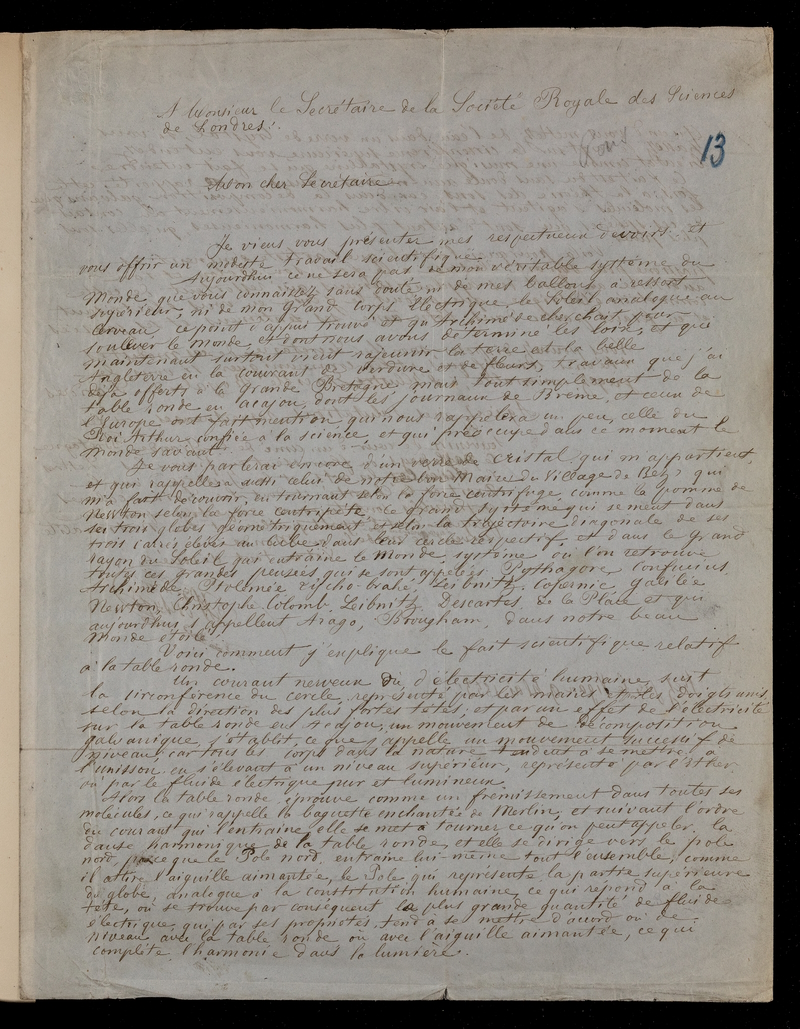 Unpublished letter regarding a séance, from J Pons to the Secretary of the Royal Society (AP/37/13)
Unpublished letter regarding a séance, from J Pons to the Secretary of the Royal Society (AP/37/13)
More recently, the Royal Society's policy has been to return rejected scientific papers, but this hasn’t always been the case, much to the vexation of some authors. In 1834, surgeon Richard Griffin submitted to the Society a paper on the dissection of two platypus specimens, complete with detailed watercolour figures:
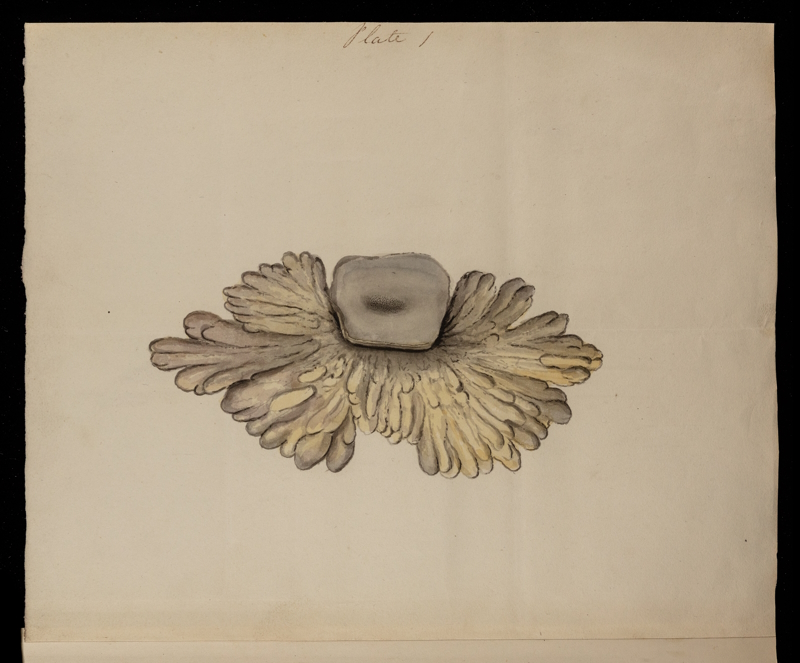 Unpublished figure, mammary glands of Platypus anatinus by Richard Griffin (AP/16/14)
Unpublished figure, mammary glands of Platypus anatinus by Richard Griffin (AP/16/14)
Evidently the Society’s decision to publish only an abstract of the paper was not well-received by the author. Fifteen years later, a letter from Griffin (PDF) appeared in the correspondence pages of The Lancet in which he alluded to ‘certain complaints against the Royal Society’ regarding their publishing decisions, using the rejection of his 1834 paper as an example. In his letter, Griffin quoted a rejection note from John George Children, then Secretary of the Society, which stated that ‘the committee of papers […] do not think it proper to publish [the paper] at present.’
Adding insult to injury for Griffin is the fact that the paper and original figures were retained by the Society, meaning that he only had ‘rough notes’ on his paper to share with The Lancet. These notes were published alongside his letter. Griffin went on to suggest that his paper may have been sidelined due to the imminent publication of Richard Owen’s similar research into platypus anatomy.
Across 85 volumes (just under 50,000 pages), the Archived Papers provide valuable insights into scientific publishing, research methodology, curiosity and bad science from the eighteenth to the twentieth centuries. While an impressive variety of topics are represented within the collection, there are certain subjects which appeared with regularity. The reanimation of frogs’ legs through the application of galvanic current was a popular pastime of nineteenth century physicians and physicists:
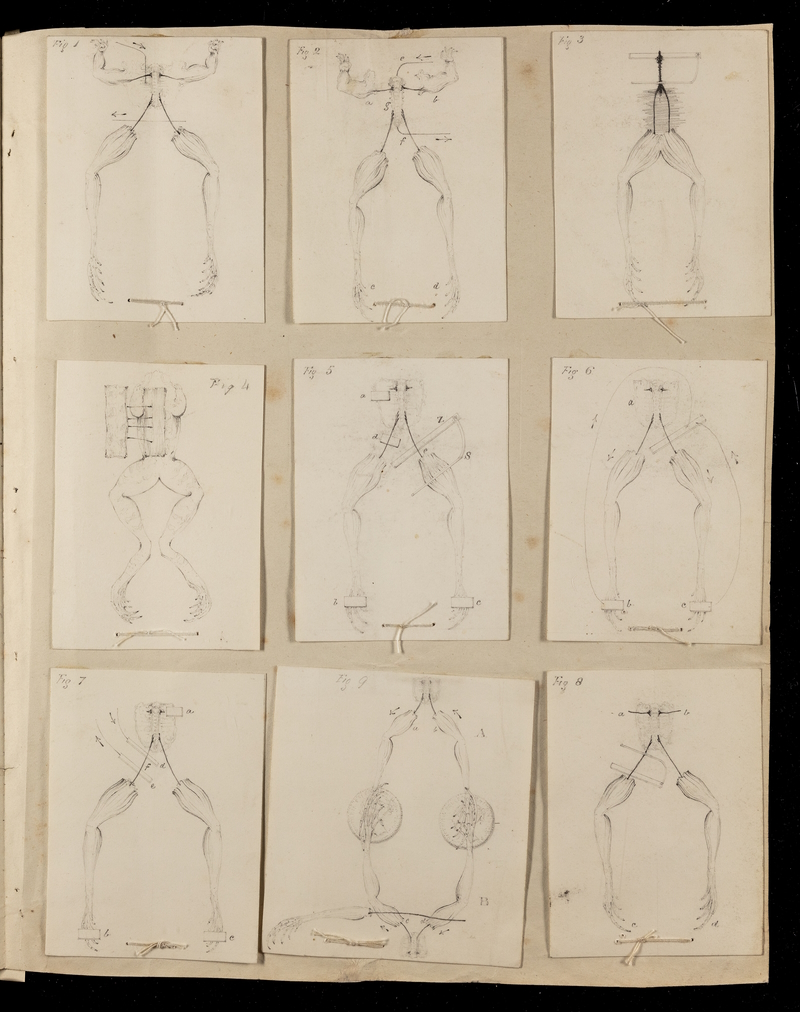 Unpublished figures, electric current passing through the bones and muscles of the brachial lumbar and pelvic regions of a frog by Marshall Hall (AP/29/6)
Unpublished figures, electric current passing through the bones and muscles of the brachial lumbar and pelvic regions of a frog by Marshall Hall (AP/29/6)
Another topic that has stood out to me is that of perpetual motion. Across the Archived Papers there are nine manuscripts outlining plans for perpetual motion machines, starting with this example by Georgii Kmettyi from the mid-nineteenth century:
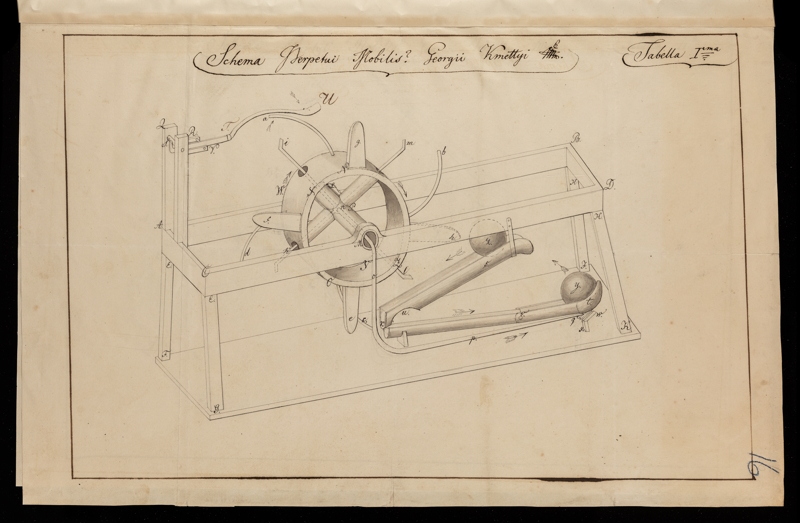 Unpublished plates, 'Schema perpetui mobilis' [Plan for perpetual motion] by Georgii Kmettyi [György Kmety] (AP/2/16)
Unpublished plates, 'Schema perpetui mobilis' [Plan for perpetual motion] by Georgii Kmettyi [György Kmety] (AP/2/16)
Later in the collection, an author identified only as ‘A B’ presents a plan for a perpetual motion machine consisting of a large container into which air is pumped by a system of levers and pistons. In a letter catalogued with A B’s paper, John George Children suggested that it would be 'badly calculated' to present the paper before the Royal Society.
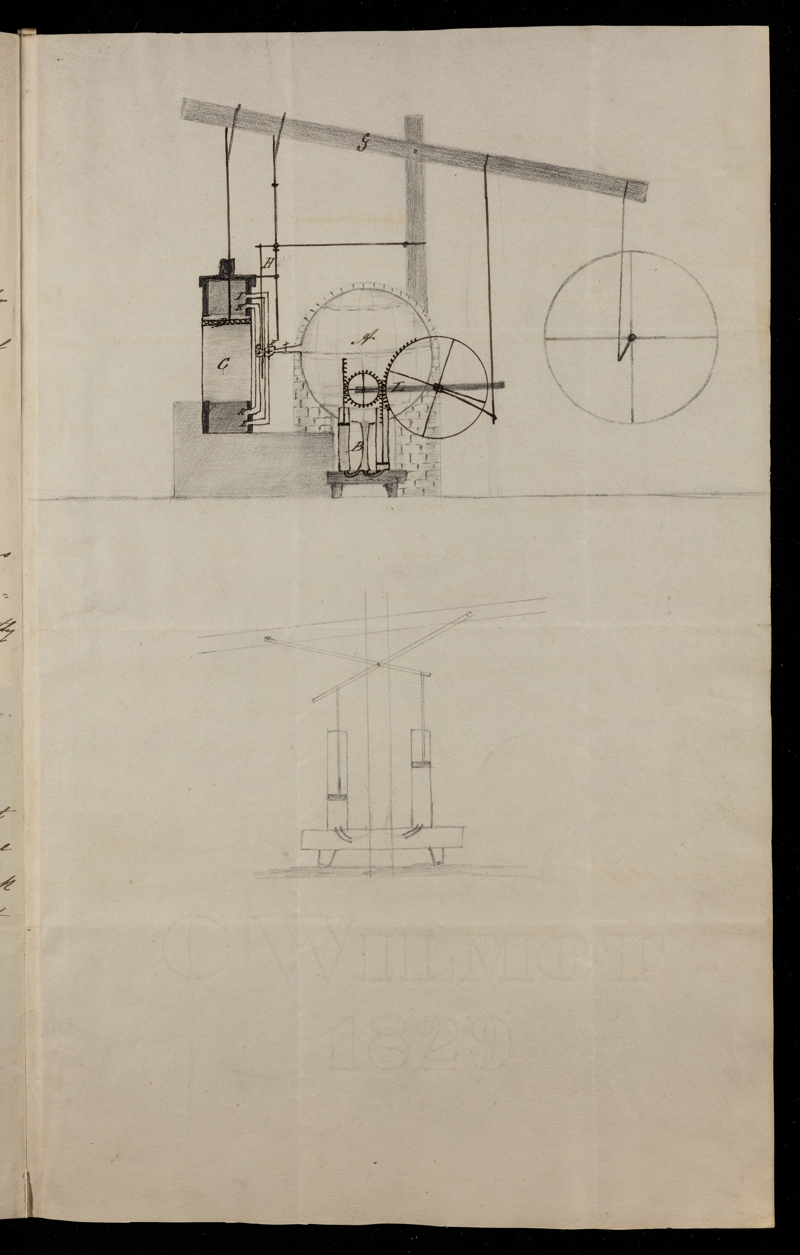 Unpublished diagrams, perpetual motion machine by A B (AP/16/1)
Unpublished diagrams, perpetual motion machine by A B (AP/16/1)
After researching Referees’ Reports for papers on the topic of perpetual motion and reaching a dead end, I came across this correspondence record stating the Society’s policy on the subject:
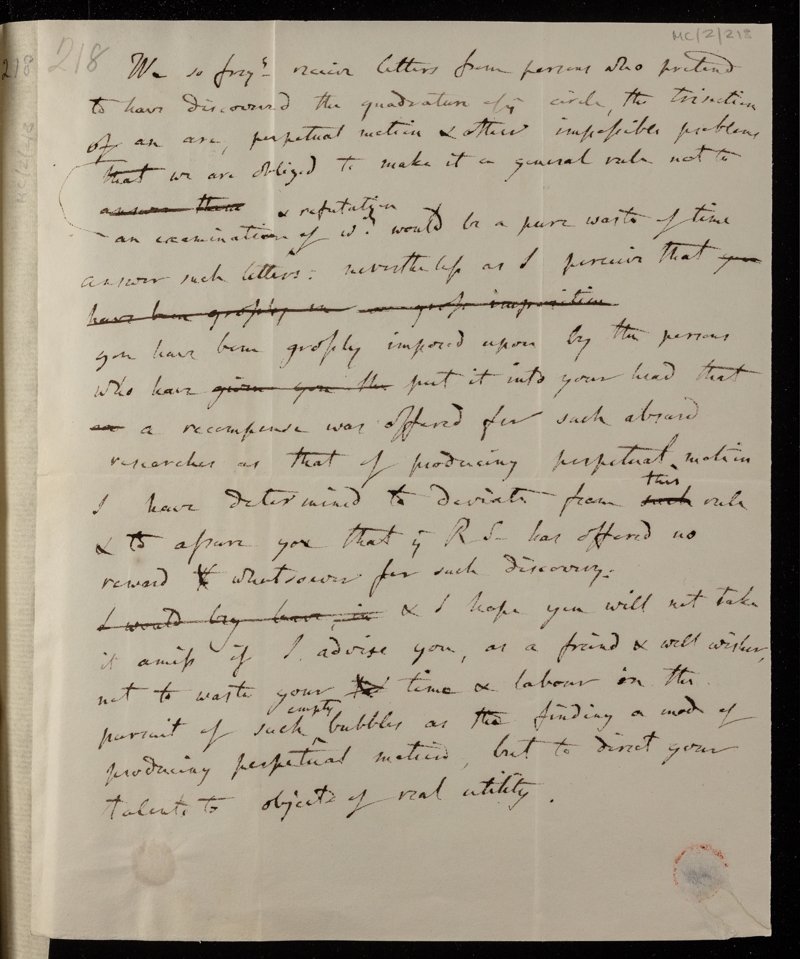 Draft letter from Dr Peter Mark Roget, Secretary of the Royal Society, c. June 1836 (MC/2/218)
Draft letter from Dr Peter Mark Roget, Secretary of the Royal Society, c. June 1836 (MC/2/218)
Peter Mark Roget, then Secretary of the Society, responded to a series of letters from Thomas Dryden, informing him that there was no recompense for ‘discoveries’ of perpetual motion and that it was standard Society procedure not to reply to letters claiming to have found the solutions to perpetual motion, quadrature of the circle, trisection of the angle and similar problems. Herbert Rix, writing in 1888, was more blunt: responding to a query on whether the Society had ever awarded or offered a prize for the discovery of perpetual motion, Rix stated that this was a 'widespread delusion'.
It appears that the Society’s referees were never troubled with manuscripts in Archived Papers on the topic of perpetual motion. The same goes for papers on squaring the circle (of which there are 16 examples across Archived Papers) and angle trisection (a modest three papers, from 1823, 1831 and 1832). So, if any keen researchers want to look over these manuscripts (just in case we’ve inadvertently been sitting on the mechanism behind David Jones’s perpetual motion machine) you can examine them for yourselves over on the newly-launched Science in the Making platform.


